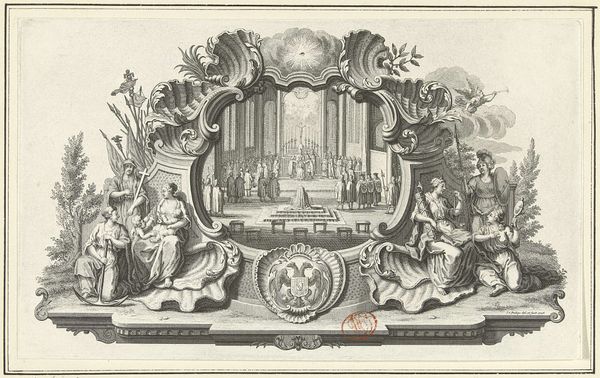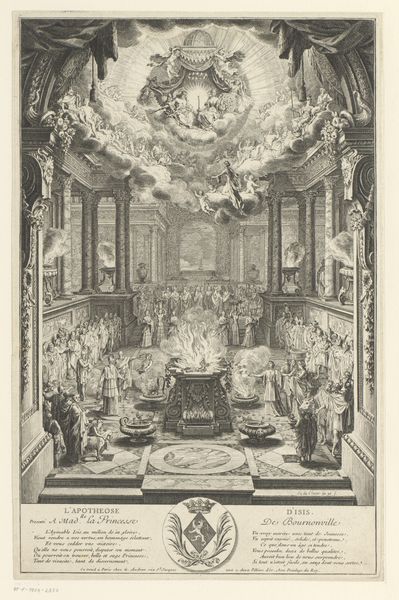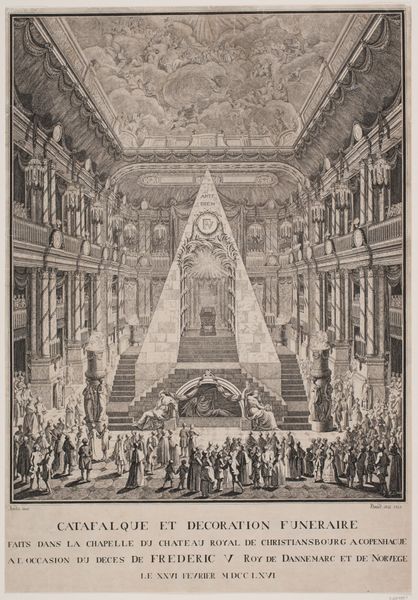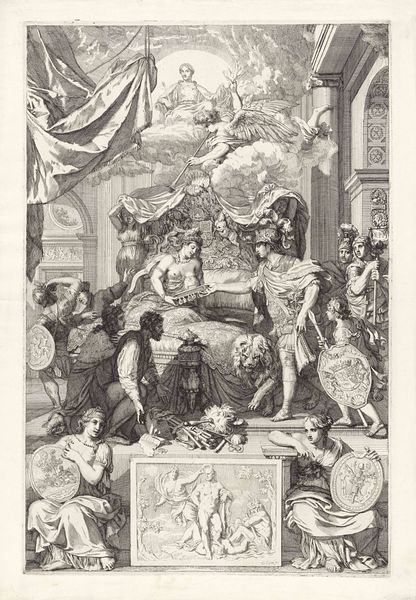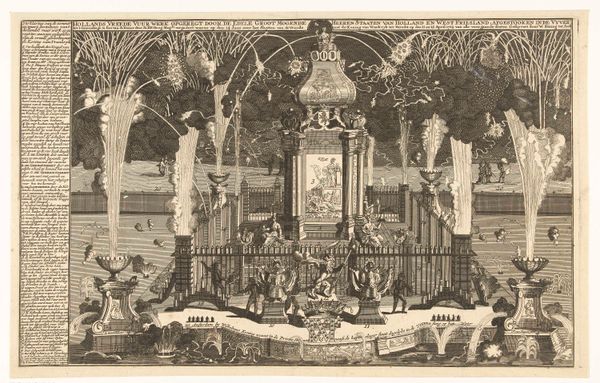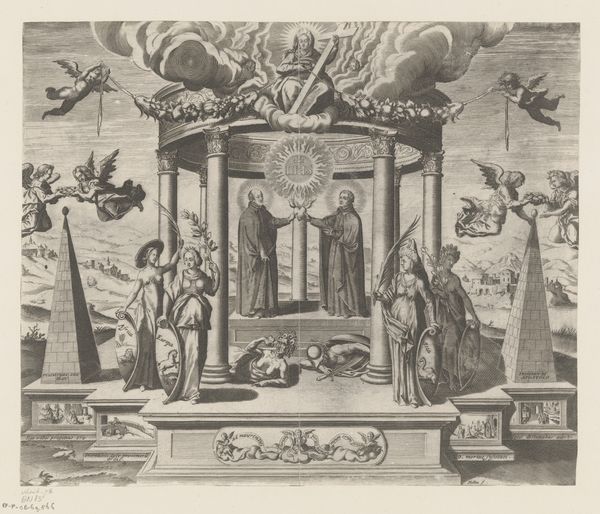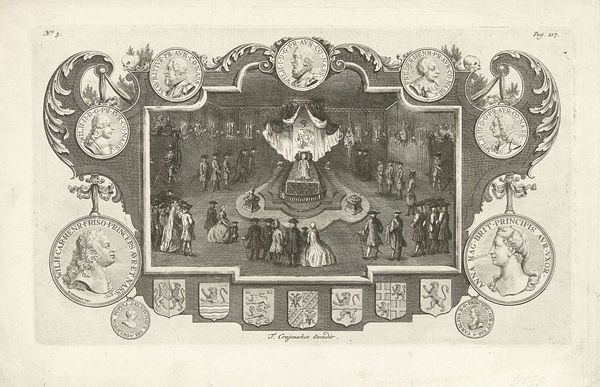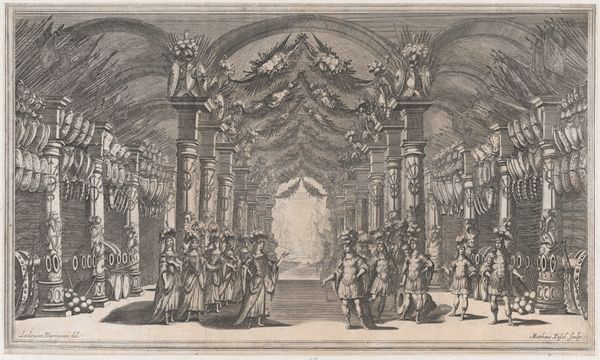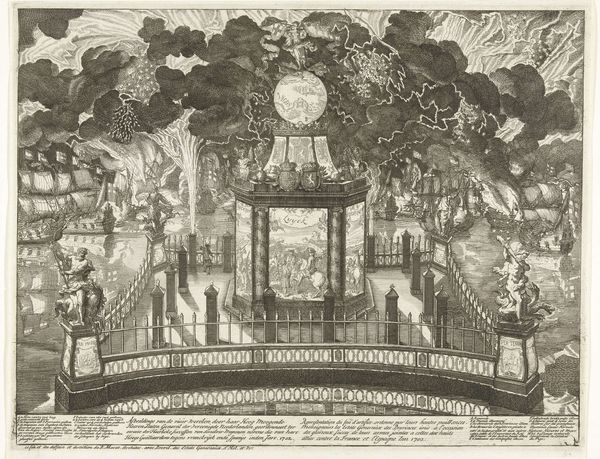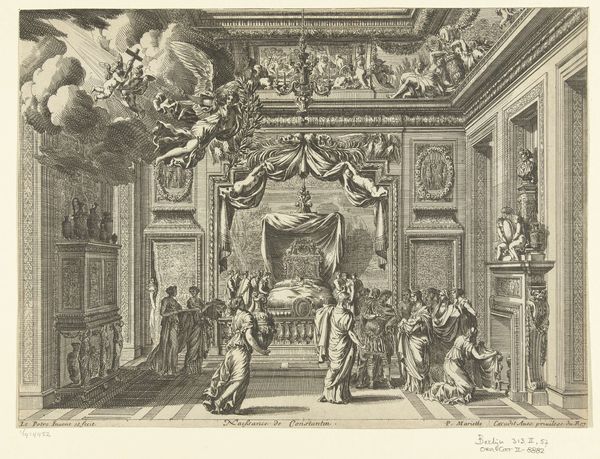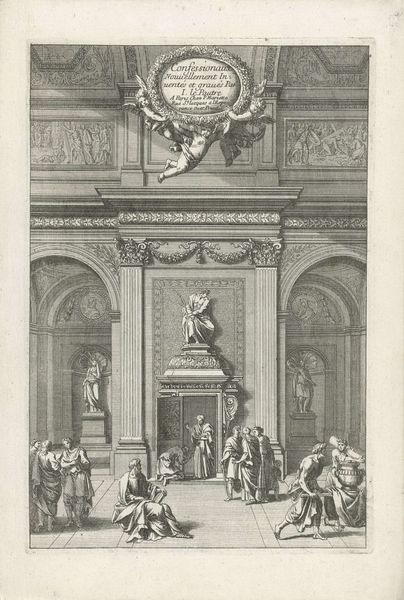
print, engraving, architecture
# print
#
classical-realism
#
history-painting
#
engraving
#
architecture
Dimensions: height 732 mm, width 542 mm
Copyright: Rijks Museum: Open Domain
Curator: Here we have "Monument voor het Joodse geloof," or "Monument to the Jewish Faith," an engraving from the late 18th to early 19th century, attributed to Noach van der Meer the Younger, residing here at the Rijksmuseum. Editor: Immediately, I'm struck by its detailed clarity and classical symmetry, with that arched gateway framing a scene brimming with figures. It feels carefully constructed, almost theatrical in its presentation. Curator: Indeed. Van der Meer created this as a representation of the Tabernacle and Jewish religious practices. Engravings such as this one were crucial in disseminating knowledge and shaping perceptions about various religions and cultures during that period. Note how the architecture of the monument borrows heavily from Greco-Roman aesthetics, indicative of the Neoclassical style popular at the time. Editor: I notice how the gateway is flanked by Moses on one side and perhaps a High Priest on the other. These figures, rendered with almost sculptural precision, offer a stark contrast to the more blurred figures within the scene itself. There's a very deliberate play of light and shadow, directing our gaze inwards. Curator: Absolutely. The placement of Moses with the tablets emphasizes the foundational laws and covenants of Judaism. Consider this artwork in the context of the era's broader interest in understanding and, at times, exoticizing different cultures, though here with apparent reverence. Also the name יהוה, “Yahweh,” that shines so brilliantly from above. Editor: The details within the archway pull me in; the artist rendered the scene within as indistinct so I might look even harder, yet the perspective is less definite as are all the vessels in the immediate foreground. It produces a contrast between the ideal and real worlds. The pillars and statuary suggest the grand scale of faith. Curator: The engraving's creation and distribution coincide with evolving attitudes toward religious tolerance and the increasing integration of Jewish communities into European society. These printed images were a way for broader audiences to access and understand Jewish traditions. Editor: Overall, the artist offers this architectural rendering which seems a thoughtful presentation from the age of enlightenment ideals which suggests respect. Curator: I agree. Reflecting on this print, one can view it both as a valuable historical document and as an intriguing artistic interpretation shaped by the social currents of its time. Editor: It is beautiful. The classical symmetry works within the tradition, presenting a faith system that's lasting. I am thankful to have spent this moment looking more closely with you at van der Meer's approach to religious respect.
Comments
No comments
Be the first to comment and join the conversation on the ultimate creative platform.

